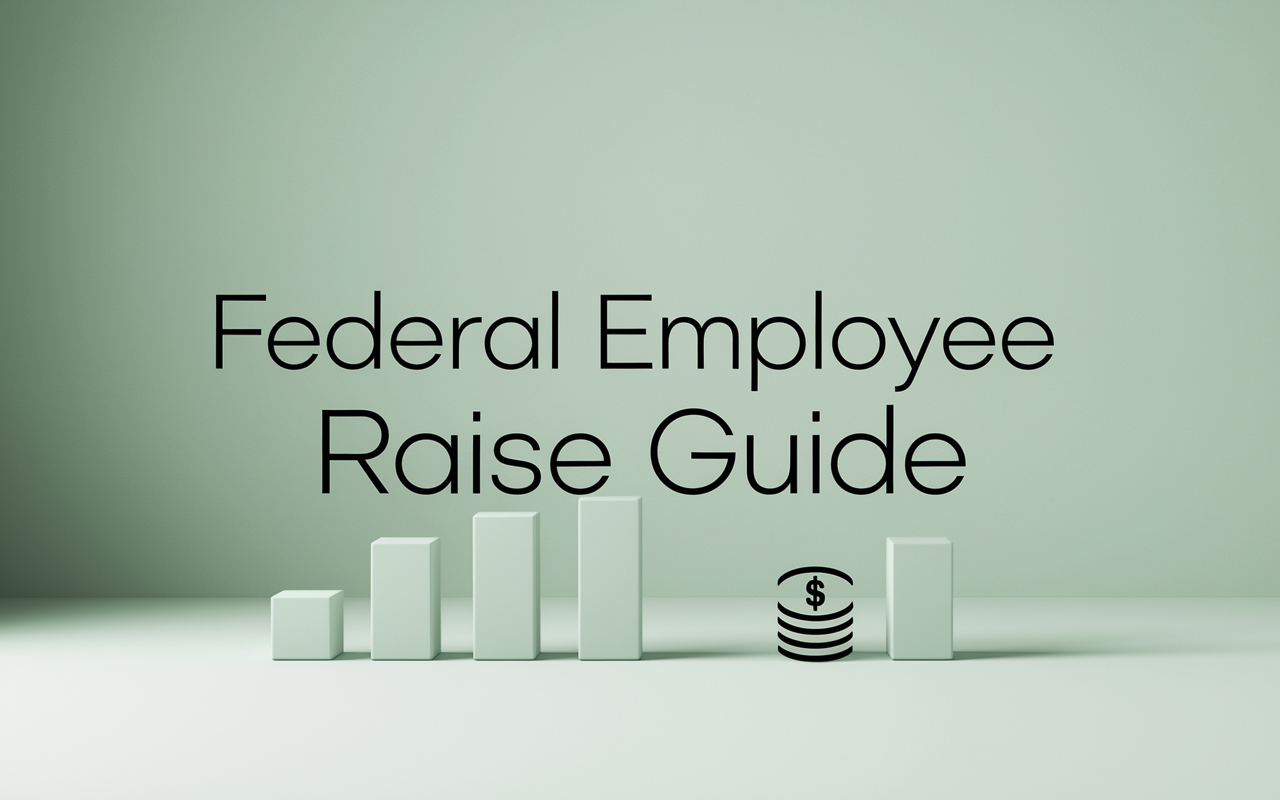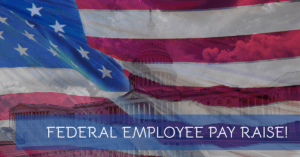Federal Employee Raise Guide: Key Updates for 2025
Introduction
Every new year brings anticipation for the federal employee pay raise, and 2025 is no exception. While the percentage change on your paycheck may not sound dramatic, it can have a lasting impact on your retirement strategies, your Thrift Savings Plan (TSP) contributions, and your career decisions. In 2025, federal employees will see a smaller average increase of 2% compared to the more substantial jumps in recent years. However, understanding exactly how this figure breaks down—and how it affects different locations and pay systems—remains vital for anyone planning a secure financial future under the Federal Employees Retirement System (FERS). If you are nearing or already past age 55, a thoughtful overview of the new pay changes can help you decide whether you need to adjust your retirement timeline or update your TSP investment strategies.
For many, the 2025 raise raises a common question: “How does the 2025 pay raise compare to prior years, and why is it smaller now?” Let’s explore the details, benefits, and broader implications so you can move forward with clarity and confidence. And remember, if you need personalized guidance, sign up for one of our free Federal Retirement Planning Workshops to learn exactly how these changes might influence your own federal retirement plan.
Breakdown of the 2025 Federal Pay Raise
The upcoming raise combines two components that together total an average 2% increase. First is the base pay adjustment of 1.7%, which generally applies to all eligible federal employees. Second is the average 0.3% increase in locality pay. Although the combined total of 2% might feel more modest compared to 2024’s higher bump, it remains a relevant boost, ensuring that pay stays somewhat aligned with the cost of living and the competitive labor market.
Legally, this 2025 raise goes into effect during the first full pay period of the year. For most employees, that date is January 12, 2025. The Office of Personnel Management (OPM) releases updated pay tables at the start of each year, which will reflect the fresh base pay rates and new locality adjustments. Any specialized pay rates—such as those for law enforcement positions—will also be included in these updated figures.
Another common question is, “How do we arrive at that 2% total?” The base pay raise is a broader adjustment that everyone receives, while the locality pay is designed to counteract the higher cost of living in certain regions. The additional 0.3% is an average—meaning some localities might see a slightly greater share of that increase, and others might see slightly less, depending on official cost-of-living data and negotiated factors.
Comparison to Previous Years
It can be enlightening to compare 2025’s 2% raise with the growth seen in recent years. Though 2% is certainly welcome, it follows on the heels of two particularly strong raises in 2023 and 2024. This shift from heighted raises southward prompts questions about broader economic trends and what employees can expect in subsequent years.
|
Year |
Average Federal Pay Raise |
Notes |
|---|---|---|
|
2022 |
2.2% |
Smaller increase post-pandemic |
|
2023 |
4.6% |
One of the largest in recent years |
|
2024 |
5.2% |
Historical high in recent times |
|
2025 |
2.0% |
Includes 1.7% base + 0.3% locality |
As shown, the 2025 pay raise is distinctly lower than those in 2023 and 2024, which were both considered relatively high. Many wonder, “Why is 2025’s increase lower?” In large part, the shift relates to economic forecasts indicating leveling inflation, as well as federal budget priorities that must balance everything from infrastructure to defense. In essence, while the 5.2% raise of 2024 reflected strong advocacy for federal compensation amid rising prices, the 2% for 2025 takes into account cooler inflation data and cost constraints going into the new fiscal year.
Factors Influencing the 2025 Pay Raise
The 2025 raise did not come out of thin air. A combination of economic data, legislative actions, and political considerations shaped its final form. Inflation, once a dominant factor in previous large pay hikes, has eased somewhat. Although cost of living remains a concern, it may not be rising at the pace it did in prior years, thus making a 2% increase potentially more palatable to budget officials.
In addition, federal spending has come under increasing scrutiny. Various agencies and congressional bodies deal with competing priorities, such as infrastructure projects, healthcare, and national defense. Pay raise discussions often involve finding “middle ground” between robust compensation for the federal workforce and overall fiscal responsibility. Political considerations are also at play. Regardless of which administration is in office, there is a continuous balancing act to ensure federal wages stay competitive without siphoning too many dollars from other policy goals.
In short, while rising inflation spurred strong raises for 2023 and 2024, cooler economic conditions and tighter budgets lowered the 2025 figure. That said, an average raise of 2% still provides a modest boost to keep pace with living costs, especially when locality pay is taken into account.
Locality Pay & Special Rates
One of the biggest misconceptions about a modest across-the-board raise is that everyone receives the same final salary increase. In truth, locality pay can substantially affect what lands in your paycheck. This 0.3% portion of the overall 2% raise is only an average—some regions see slightly more, others slightly less, depending on local wage conditions and cost-of-living data. Law enforcement, healthcare, and other special rate categories may see additional adjustments that exceed the broad locality rate.
The following table highlights just a few examples of locality pay area differences for illustration, though actual figures may vary once official 2025 tables are released:
|
Locality Pay Area |
Base Rate |
Locality Adjustment |
Total % Increase |
|---|---|---|---|
|
Washington-Baltimore-Arlington |
1.7% |
Approx. 0.5% |
2.2% |
|
Los Angeles-Long Beach |
1.7% |
Approx. 0.6% |
2.3% |
|
New York-Newark |
1.7% |
Approx. 0.4% |
2.1% |
As you can see, even small variations in locality pay can push the total raise above the stated 2%. It’s important to check the specific pay tables for your region once the OPM publishes them to understand how much of a total pay bump you will receive. For employees spending the final years of their career in a certain locality, these distinctions can be particularly meaningful when calculating your “high-3” salary average for retirement pension purposes.
Impact on Different Pay Systems
Federal pay rates vary not just by geography, but also by pay system. General Schedule (GS) employees—the largest cohort of federal workers—will generally see the full 2% average. Wage Grade (WG) employees, who are paid by the hour, may experience incremental locality-based adjustments but could see greater or lesser raises depending on their specific region and job category. Meanwhile, members of the Senior Executive Service (SES) often have distinct pay structures with certain caps that might limit how large or how quickly their salaries can increase.
The key question for many WG employees is, “Do I get the same 2% average raise as GS?” While WG rates typically conform to the spirit of the across-the-board increase, they also take local prevailing wages into account, which can result in variance from the standard GS schedule. If you want a precise figure, keep an eye out for the official pay schedules pertinent to your position once the 2025 pay tables are finalized.
It’s also worth noting that certain mission-critical roles or occupations in short supply might receive additional special pay on top of the general raise. Recent years have seen specialized rates for roles like cybersecurity, engineering, and law enforcement in some agencies.
Comparison to Military Pay Raise
Military and civilian pay raises sometimes mirror each other, but not always. In 2025, members of the armed forces will receive a 4.5% pay raise, which is noticeably higher than the civilian federal raise. Why the discrepancy? Military pay commonly falls under the purview of Congress, which can legislate higher rates to address recruitment and retention challenges. Civilian pay, on the other hand, often follows a presidential executive order influenced by broader budgetary goals.
This difference means some of you who have spent time serving in both military and civilian capacities might wonder if this impacts your retirement or bridging of service for pension calculations. While the broad principle is that your final retirement pay is based on the rules of the system you remain in at the end of your federal service, it’s wise to consult an advisor to clarify how these distinct raises affect your total compensation across dual or prior service periods.
Legislative Efforts and Future Proposals
Although the 2% raise for 2025 is effectively locked in, that does not mean future raises will remain at similar levels. Legislative proposals, such as the FAIR Act, regularly attempt to provide larger pay bumps for federal employees. Union organizations like the American Federation of Government Employees (AFGE) and the National Treasury Employees Union (NTEU) continue lobbying for raises they believe more accurately reflect private-sector wages and inflation needs. Some speculate we might see proposals around 4.3% or even 3% for 2026, depending on prevailing economic conditions and political leadership.
It’s worth keeping in mind that once a raise is set by executive order, the window for modifications generally closes unless there is a significant shift in either congressional legislation or national economic emergencies. While 2025’s 2% may stand firm, the conversation quickly moves on to the following year’s negotiations, highlighting the importance of continuous vigilance and planning.
Retirement Planning & Financial Impact
Pay bumps mean more than an immediate lift in take-home pay. They can also influence your salary-based benefits—particularly for those in the Federal Employees Retirement System (FERS). The size of your “high-3” average salary is crucial to your pension calculation, so each year of earnings can shape your retirement income outlook. A 2% raise might not feel as substantial as the previous 4%–5% adjustments, but it still contributes to the gradual growth of your final pension.
In addition, TSP contributions are based on a percentage of your salary, so any salary increase can incrementally boost these retirement savings. Proactive planning is critical here. If you’ve got five or fewer years to retirement, a smaller raise could still push you to reconsider the timing of your exit, especially if you’re looking to maximize your high-3 average. It may also prompt you to re-examine your TSP choices, making sure that your investment strategy matches both your risk tolerance and your remaining career window.
If you have concerns or simply want to explore your options in more detail, consider signing up for one of our free Federal Retirement Planning Workshops. These sessions offer in-depth guidance on combining your pay raises, TSP strategies, and potential COLA adjustments for a well-rounded retirement approach.
Key Takeaways and Steps Forward
Despite being lower than the previous two years, the 2% raise for federal employees in 2025 can still affect take-home pay and long-term planning. Locality pay nuances mean that many individuals will see slightly different amounts in their checks. GS employees are set to receive the lion’s share of the average 2%, while WG and SES staff might experience more specialized adjustments. Meanwhile, the military pay raise sits at 4.5%, demonstrating that civilian raises and military raises are not always aligned.
As with all pay changes, a disciplined approach to financial and retirement planning remains the best way to preserve security and peace of mind. Whether it’s calculating your high-3 salary or deciding how much extra to funnel into your TSP, understanding how each annual raise shapes your future can make a significant difference by the time you retire. If you’ve found yourself wondering how to handle these new numbers or want tailored advice, attend one of our free Federal Retirement Planning Workshops to explore next steps.
Conclusion
Staying informed about your annual pay raise is more than just a paycheck-to-paycheck concern—it’s a pillar in constructing a solid retirement roadmap. The 2025 raise might be smaller than the recent highs, but it should still be factored into your career and financial goals. The best decisions often come after reviewing the figures, calculating projected pension benefits, and speaking with professionals who understand federal employee benefits inside and out. For questions unique to your location, pay system, or service history, reach out to a specialized advisor or attend a workshop that delves into these finer details.
This year’s 2% adjustment underscores the importance of adaptability: as federal pay increases ebb and flow, maintaining a dynamic retirement and investment plan ensures that a single year’s modest raise does not derail your long-term objectives. If you’re age 55 or older and aiming to secure your best possible retirement outcome under FERS, consider scheduling time at one of our free Federal Retirement Planning Workshops. Our team of ChFEBC, CFP, and AIF professionals is here to guide you in making the most of every pay increase—this year and for many years to come.










